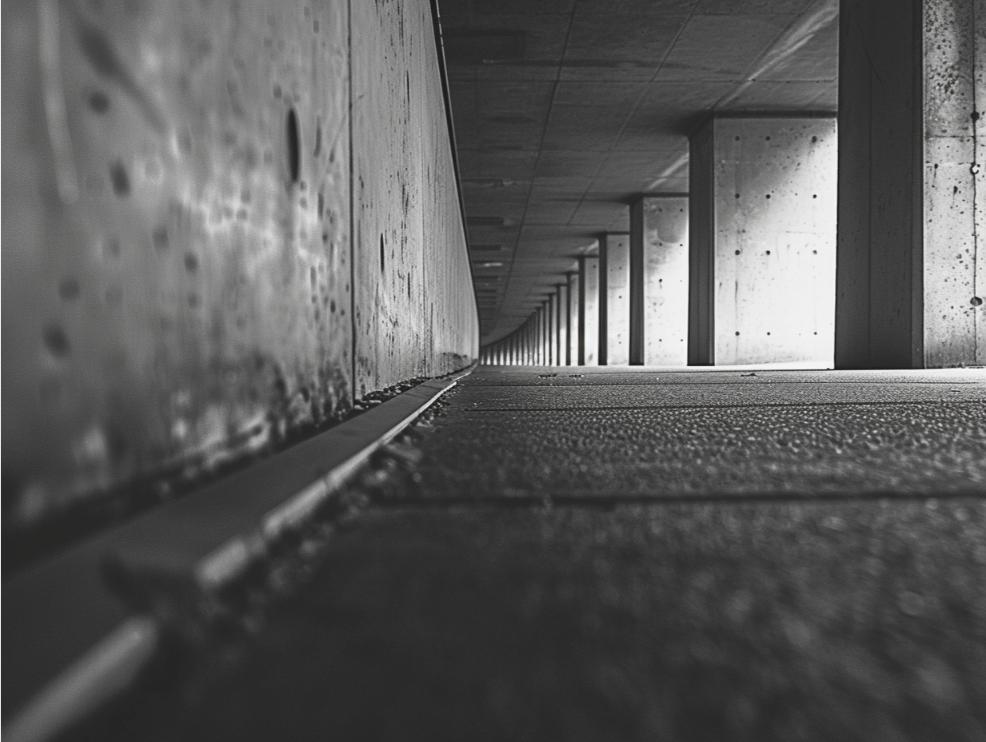What Are Leading Lines: Mastering the Art of Dynamic Photography Compositions
Introduction
What are leading lines? In photography, leading lines are powerful compositional tools that guide the viewer’s eye through an image, creating a sense of depth and focus. These lines can be anything from roads and rivers to fences and shadows, and they serve to draw attention to the main subject of the photograph.
Leading lines are significant because they help photographers create more engaging and dynamic images. By using these lines effectively, photographers can lead viewers on a visual journey, enhancing the overall impact and storytelling of the photograph. Whether you’re capturing a sweeping landscape or an intimate portrait, incorporating leading lines into your composition can transform a simple scene into a compelling visual experience.
Definition of Leading Lines
Leading lines are a fundamental compositional element in photography, used to direct the viewer’s eye through the frame and towards the main subject of the image. These lines naturally guide the viewer’s attention, creating a path that leads to the focal point, thus enhancing the overall impact and storytelling of the photograph.
Different Types of Leading Lines
Straight Lines:
- Description: These are the most common and easiest to recognize. Straight lines can be found in roads, bridges, railways, and architectural elements.
- Effect: They create a sense of order, direction, and stability, often leading the viewer directly to the subject with a clear and strong visual impact.
Curved Lines:
- Description: Curved lines are more subtle and can be found in natural elements like rivers, paths, and tree branches.
- Effect: They provide a sense of flow and movement, gently guiding the viewer’s eye through the image and often creating a more relaxed and harmonious feeling.
Diagonal Lines:
- Description: Diagonal lines can be dynamic and energetic. They are commonly seen in slopes, staircases, and shadows.
- Effect: These lines add a sense of action and dynamism to a photograph, leading the viewer’s eye across the frame in a zigzag pattern, which can create tension and interest.
Converging Lines:
- Description: Converging lines are lines that move towards each other and meet at a point, often creating a vanishing point. Examples include roads or pathways that appear to converge in the distance.
- Effect: They create a strong sense of depth and perspective, drawing the viewer’s eye towards a specific point in the image and making the scene appear more three-dimensional.
Implied Lines:
- Description: Implied lines are not actual lines but are created by elements that suggest a line. For example, the gaze of a person or an animal can create an implied line leading to what they are looking at.
- Effect: These lines can be very effective in subtly directing the viewer’s attention without them realizing it, creating a natural and engaging flow within the photograph.
By understanding and utilizing these different types of leading lines, photographers can significantly enhance their compositions, creating images that are not only visually appealing but also compelling in their storytelling.
Importance of Leading Lines
How Leading Lines Guide the Viewer’s Eye Through the Image
Leading lines are essential in photography because they act as visual guides, naturally directing the viewer’s eye through the image. These lines can start from any edge of the frame and lead to the main subject or point of interest. By creating a path for the eye to follow, leading lines help to focus attention and create a narrative within the photograph. They make the image more engaging by guiding the viewer’s gaze in a deliberate way, ensuring that the subject is seen and appreciated within the context of the entire scene.
The Role of Leading Lines in Creating Depth and Perspective
Leading lines play a crucial role in enhancing the sense of depth and perspective in a photograph. When lines converge towards a point in the distance, they create the illusion of three-dimensionality on a two-dimensional plane. This technique, known as linear perspective, makes the scene appear more realistic and immersive. Leading lines can also create a sense of scale and distance, helping to convey the vastness of a landscape or the intimacy of a close-up shot. By carefully positioning leading lines, photographers can manipulate how viewers perceive the spatial relationships between objects within the frame.
Examples of Effective Use of Leading Lines in Famous Photographs
Ansel Adams’ “The Tetons and the Snake River” (1942):
- Description: This iconic landscape photograph by Ansel Adams features the Snake River winding through the foreground, leading the viewer’s eye towards the majestic Teton Range in the background.
- Effect: The curved line of the river creates a sense of movement and guides the viewer through the vast landscape, enhancing the depth and grandeur of the scene.
Steve McCurry’s “Afghan Girl” (1984):
- Description: In this famous portrait, the gaze of the young Afghan girl acts as an implied leading line. Her intense green eyes draw the viewer’s attention immediately, leading to an exploration of the rest of her face and the rich textures of her clothing.
- Effect: The implied lines created by her gaze make the portrait compelling and intimate, focusing the viewer’s attention on her expression and the story behind her eyes.
Henri Cartier-Bresson’s “Behind the Gare Saint-Lazare” (1932):
- Description: This classic image captures a man leaping over a puddle, with the blurred fence lines and reflections leading towards the action.
- Effect: The diagonal lines of the fence and the man’s reflection in the water create a dynamic sense of movement and urgency, guiding the viewer’s eye to the precise moment of the leap.
Andreas Gursky’s “99 Cent II Diptychon” (2001):
- Description: In this large-scale photograph of a supermarket, the rows of products and the linear arrangement of shelves create strong leading lines.
- Effect: These lines guide the viewer’s eye through the overwhelming array of goods, emphasizing the scale and repetition within the consumer environment, and creating a sense of depth and perspective.
How to Use Leading Lines in Photography

Tips for Identifying and Incorporating Leading Lines in Different Types of Photography
-
Landscape Photography:
- Identifying Leading Lines: Look for natural elements such as rivers, paths, tree lines, and mountain ridges.
- Incorporating Leading Lines: Use these elements to lead the viewer’s eye from the foreground to the background, creating depth and interest. Position your camera to capture these lines prominently, guiding the viewer through the landscape.
-
Portrait Photography:
- Identifying Leading Lines: Use elements like fences, walls, or even the lines created by a subject’s limbs or clothing.
- Incorporating Leading Lines: Position your subject so that the leading lines draw attention to their face or eyes. This technique can add depth and context to your portraits, making them more engaging.
-
Architectural Photography:
- Identifying Leading Lines: Look for structural elements such as staircases, corridors, window frames, and building edges.
- Incorporating Leading Lines: Use these elements to emphasize the design and scale of the architecture. Position your camera to highlight these lines, leading the viewer’s eye through the architectural features.
-
Street Photography:
- Identifying Leading Lines: Look for roads, sidewalks, crosswalks, and even the flow of people.
- Incorporating Leading Lines: Use these urban elements to create dynamic compositions that guide the viewer’s eye through the scene. Capture moments where these lines naturally lead to a subject or point of interest.
Techniques for Positioning and Framing Leading Lines to Enhance Compositions
-
Start from the Edges:
- Position leading lines so they start from the edges or corners of the frame, naturally guiding the viewer’s eye into the image. This technique draws the viewer’s attention from the outside to the focal point within the photo.
-
Use the Rule of Thirds:
- Align leading lines with the rule of thirds grid. This positioning creates a balanced and harmonious composition, making the photo more visually appealing.
-
Experiment with Angles:
- Change your shooting angle to see how different perspectives affect the leading lines. Low angles can make lines appear more dramatic, while high angles can offer a unique viewpoint.
-
Create Depth with Converging Lines:
- Use converging lines to create a sense of depth. Position these lines so they lead towards a vanishing point, enhancing the three-dimensional feel of the image.
-
Balance Leading Lines with Other Elements:
- Ensure that leading lines complement the overall composition. Balance them with other elements in the scene to avoid overwhelming the viewer.
Common Mistakes to Avoid When Using Leading Lines
-
Ignoring the Main Subject:
- Ensure that your leading lines direct attention to a clear focal point. Without a main subject, the lines may lead to an empty or uninteresting part of the frame.
-
Overcomplicating the Composition:
- Avoid cluttering the image with too many leading lines. Simplicity is key; too many lines can confuse the viewer and detract from the main subject.
-
Misaligned Lines:
- Be mindful of how leading lines interact with the edges of the frame. Misaligned lines can lead the viewer’s eye out of the image instead of towards the focal point.
-
Forgetting Context:
- While leading lines are powerful, they should not overshadow the context and story of the photo. Ensure that they enhance rather than dominate the composition.
-
Overusing Leading Lines:
- Leading lines are effective but can lose their impact if overused. Use them strategically and vary your compositions to keep your photography fresh and engaging.
Conclusion
In this article, we explored the powerful concept of leading lines in photography. We began by defining what leading lines are and discussed the different types, including straight, curved, diagonal, and converging lines. We then delved into the importance of leading lines, highlighting how they guide the viewer’s eye, create depth and perspective, and enhance the overall composition of an image. Additionally, we provided practical tips on identifying and incorporating leading lines in various types of photography, from landscapes to portraits, as well as techniques for positioning and framing these lines effectively. Lastly, we touched on common mistakes to avoid to ensure your use of leading lines is both intentional and impactful.
We encourage you to experiment with leading lines in your photography. Play around with different types of lines and perspectives to see how they can transform your compositions. Leading lines can be found everywhere, from natural landscapes to urban environments, so keep an eye out for opportunities to use them creatively.

